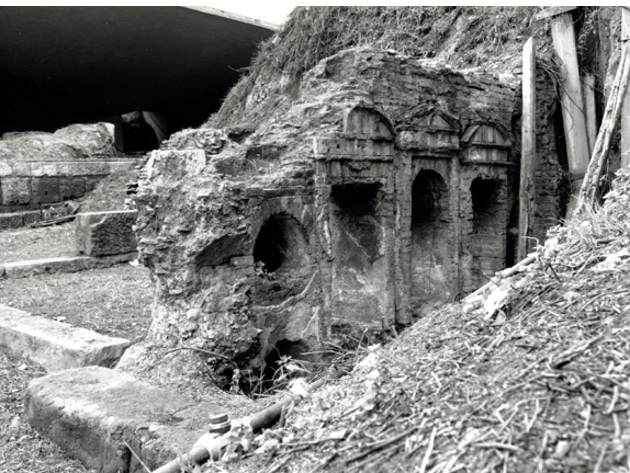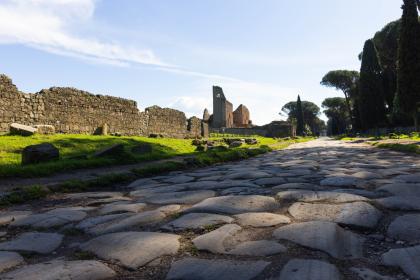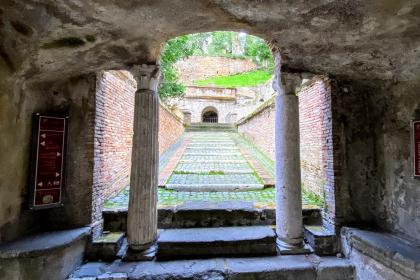
The burial ground is located on the right side of the Via Appia Antica, below the current via Marco Polo overpass and covers a chronological period from the late Republican age (early 1st century BC) to the 4th century AD. Excavations have shown that the area was much larger and also occupied the left side of the Via Appia. The tomb includes a square-shaped tomb, a mausoleum and a rectangular tomb with a mosaic floor on which the Four Seasons and the abduction of Proserpina are represented.
Some structures in blocks of tuff, dating back to the Republican age and covered by the overpass, could instead belong to a temple of Mars, mentioned in literary sources outside Porta San Sebastiano in the area of Vigna Nari. The whole area was covered by a mound of earth formed by waste and discharges starting from the end of the 5th century AD, forming an artificial hill above the burial buildings.
The discovery of some stretches of paving at the end of the 1940s and the alignment of some tombs along the road led to the hypothesis of the presence, to the right of the Via Appia, of a second road axis considered by some scholars to be the ancient via Ardeatina.
Photo credits: Courtesy of Sovrintendenza Capitolina
La Rue Appienne

 Condividi
Condividi
La Zone archéologique du Tombeau des Scipions

 Condividi
Condividi
Parc de la Caffarella

 Condividi
Condividi
Informations
The monument is visible from the road, close to the bridge overpass.
 Condividi
Condividi
Locations
Pour connaître tous les services d'accessibilité, visitez la section Rome accessible.











































